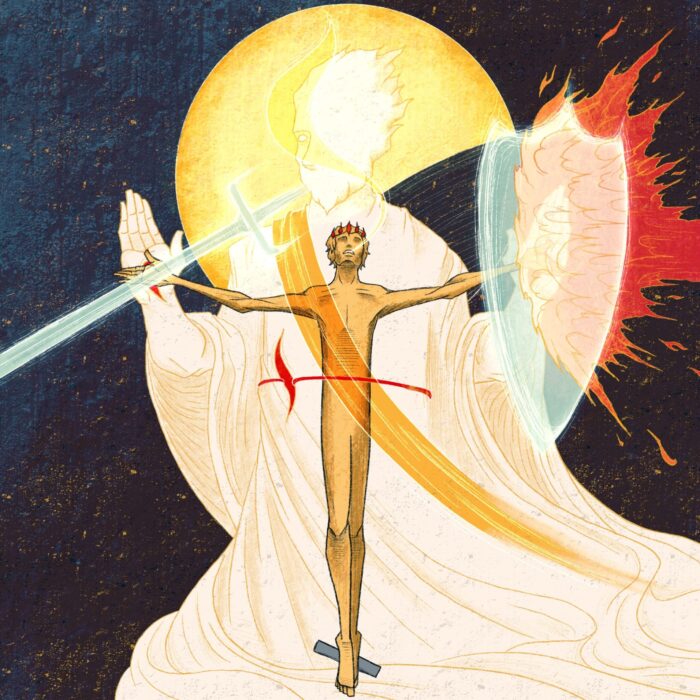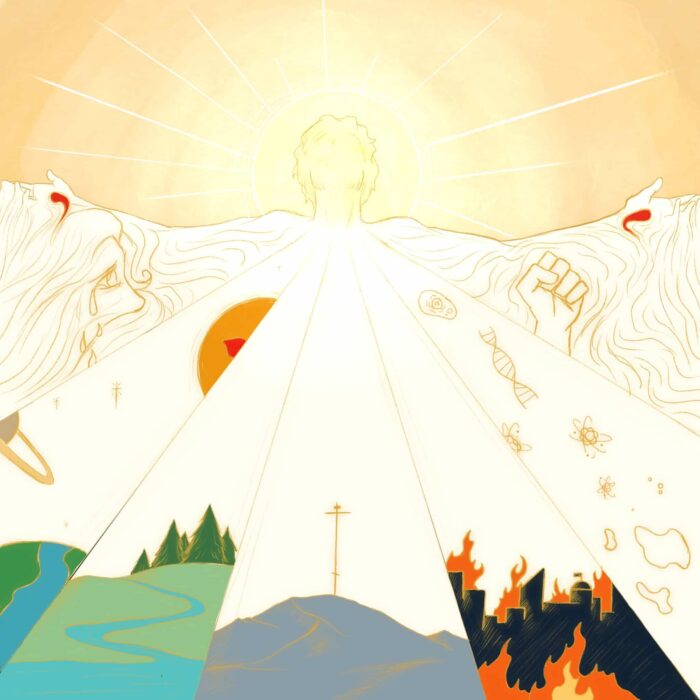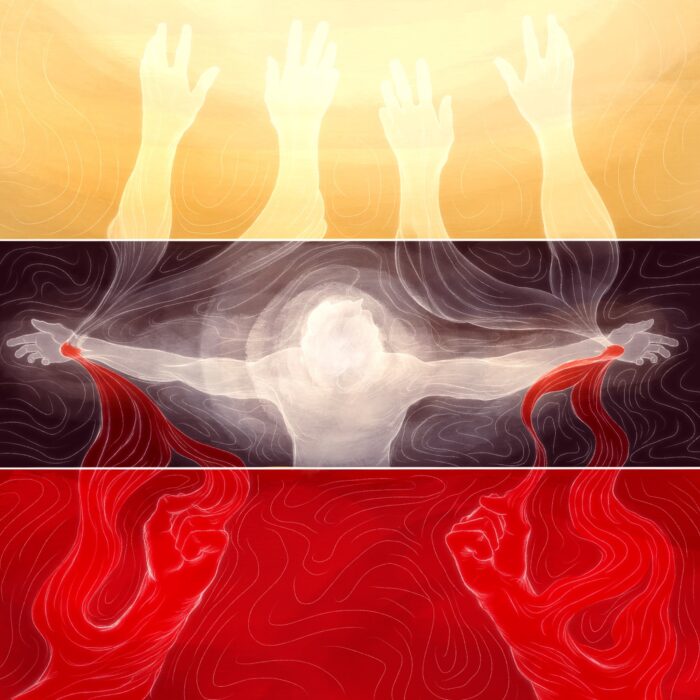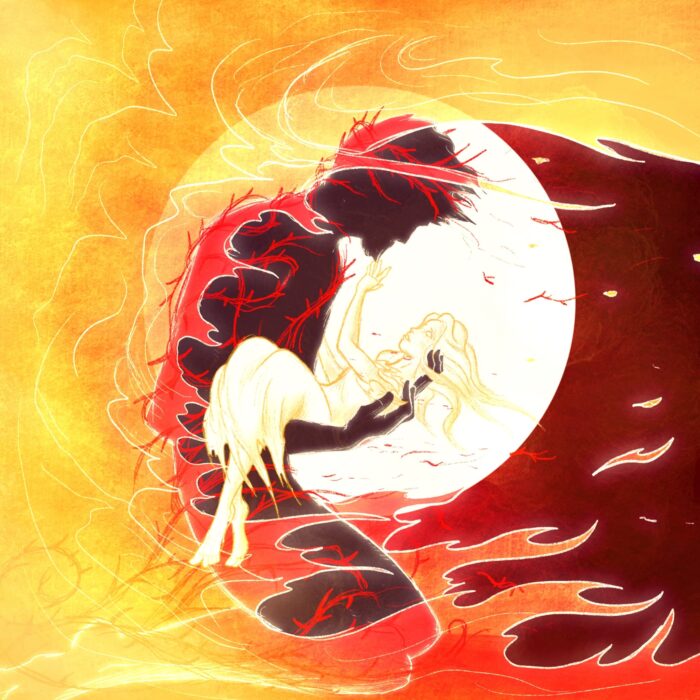In Ephesians 6:10, Paul calls believers to be strong in the Lord, and in the strength of His might. Any strength the Christian has in the struggles of this life is strength in the Lord (that is, in union with Christ) and is, in fact, the Lord’s own might—just as any vitality or fruitfulness a branch has is only possessed by virtue of union to the vine and is the vine’s own vitality and fruitfulness manifest in the branch.
To emphasize this point, Paul’s description of the “full armor of God” in which the Christian should be clothed alludes to the description of God’s own armor from Isaiah 59:16-18. The armor of the believer is, in fact, God’s armor placed upon the believer only as they are united to God in Christ. But, we need to say more than this, because God’s “armor” is ultimately a metaphorical expression for His own character—it is who He is. Thus, to be clothed in the armor of God is to be clothed in God Himself, and this is possible only in Jesus Christ (“in the Lord,” as Paul says).
In the final analysis, the armor of God is not something God gives to us, it is something—indeed, someone—God is for us in the crucified and risen Jesus Christ, who is Himself the character, the identity, the glory of God made flesh. And so, in this picture, I’ve attempted to make visually explicit what is theologically implicit in Ephesians 6:15-18, namely, that the spiritual armament of the Christian is ultimately Jesus Christ Himself—known, loved, and trusted with the entire soul—in whom they are clothed by their faith-union through the Spirit.
Our strength, our perseverance, our fruitfulness, our endurance in hope throughout 2021 is wholly dependent upon—and, indeed, is the moment-by-moment manifestation of—our grace-given union to God in Christ by His Spirit. May He grant us to live by faith in this truth more and more.
///
So, let’s consider each of the seven pieces of the armor, looking at how they are manifestations of who God is for us in Jesus, and how I’ve tried to portray this in the image.
First — The Belt of Truth. In this picture, the belt of truth is represented by a red cord coming from and returning back to the wound in Christ’s side. This is because Jesus Christ Himself—as the crucified and risen one in whom alone God is known—is the Truth (John 14:6), and secondly because the truth about the believer is that they are bound to and so defined by the risen Jesus through the love-driven, truth-manifesting obedience of His this death and resurrection.
Second — The Breastplate of Righteousness. The righteousness with which the Christian is armored is not ultimately their own righteousness—though, if their lives are not marked by increasing righteousness, they are likely not wearing the breastplate. Rather, it is God’s righteousness as manifest in and embodied by Jesus Christ. Imagine that there is a pauper girl who marries a prince. As soon as she marries him, his title, his castle, his wealth is now hers as well—why, because she earned it? No, it is hers by virtue of her union to the prince in marriage. Similarly, when God unites a believer to Christ by grace, through faith, then what is Christ’s—specifically here, His righteousness—is counted to the believer, not because they earn it, but by virtue of their union to Him (note also that the Bride’s debt is counted to her Bridegroom, but considering that would take us beyond the bounds of our present discussion). So, in this image, the golden sash of Christ’s own righteousness is also wrapped around the saint’s chest, but only because the saint is literally pictured in Christ.
Third — The Readiness of the Gospel of Peace. What ought the feet shod in the readiness of the Gospel of peace be ready to do? Readiness for what? I would suggest the answer is readiness to lay down one’s life in union with the Lord; it is readiness to die. Whether that means the myriad little deaths of love throughout the day (giving up time, plans, purposes, finances, preferences so that others might be built up in Christ), or the death of cultural and social influence that comes from faithfulness to the name of the Crucified One, or—ultimately—the death of our bodies in final and holistic witness to the beauty of God’s name as He has declared Himself in Jesus our Lord, however this “death” manifests itself, I believe it is ultimately death for which the Gospel of peace readies the saint. To know ourselves crucified with, buried with, raised with, and seated with, Jesus Christ; to know that He Himself is our life and that when He appears, we will appear with Him in glory; to know this gospel of peace, is to be made ready to die—whatever death love may demand—with and as our Lord. Thus, the readiness of the gospel is represented in this picture as a cross bar behind the saint’s feet mimicking the cross bar that is often seen behind Jesus’ own feet in imagery of the crucifixion.
Fourth — The Shield of Faith. Faith is only as sure as its object, and so our question here ought to be, “faith in what?” Of course, the answer is: faith in Jesus as the crucified and risen one who is Himself our savior and the true revelation of God. Central to this faith is the recognition that we ourselves are powerless and that God in Christ alone is our life and hope and strength. Because of this, the saint’s left hand is not closed in a grip of his own strength around a shield (as though the strength of our own faith could defend us!), rather, it is opened in the acknowledged desperation—the “poverty of spirit”—inherent to saving faith, and placed in the wound of Christ’s hand (representing the slain and risen Lord who alone is the object of saving faith). It is from this position of submission to and dependence upon the risen Lord that faith is expressed. So, in this picture the shield of faith is represented almost as a “force field” of God’s grace raised up before the assaults of the enemy, and raised up precisely and only as the saint casts himself in desperate dependence upon the wounded hand of the risen Christ.
Fifth — The Helmet of Salvation. I’ve represented the helmet as a crown with five red jewels. The jewels, in turn, represent the five wounds of Christ’s crucifixion (two in His hands, two in His feet, one in His side) as they are transfigured into witnesses of God’s love and heralds of His beauty through the resurrection. In this way, the five-jeweled crown becomes a symbol for the death, resurrection, and exaltation of the slain and risen Lord, and so a succinct image of our salvation. The placement of this crown on the saint’s brow represents his union with Jesus in His death and resurrection and, therefore, represents the saint’s own salvation through this death and resurrection. To be united to the slain and risen one is indeed the saints’ “helmet,” their impenetrable defense against all eternal harm which not even death itself can pierce, the crown of glory and honor placed upon those whom God in Christ has raised up from the pit and destined for a fullness of life that begins now and continues into the endless ages to come.
Sixth — The Sword of the Spirit. Paul says the sword of the Spirit is the word of God, but what does he mean when he says that. We have since come to think of the “word of God” as the 66 books of the Bible, but—of course—Paul did not have a “Bible” like we do (he was, in fact, writing the final parts of it!). No, when Paul talks here about the “word of God,” it seems most likely that he is referring to the the proclaimed gospel of the crucified and risen Jesus who is the image and glory of God. The word of God is the word that God has spoken (in and through and as His incarnate Word) in the life, death, and resurrection of Jesus; it is the word by which He has revealed His Name in righteousness and secured final redemption for all His own. This word is represented in this image as a sword coming from Christ’s mouth (cf. Rev.1:16 and 19:21, also Heb.4:12) because, ultimately the word that Jesus speaks is the gospel, which is to say, is His witness to Himself as the one sent from God to redeem His people and reveal His Name. The sword passes through Christ’s wounded hand—and so through the saint’s hand as well—in order to show two things: 1) That the word in view here is primarily the gospel of Jesus’ death and resurrection, spoken first by—and in—Christ, and spoken derivatively by His saints, and 2) To show that in order to wield this sword of the gospel word, one must be ready to—and certainly will—bear the wounds of the gospel in themselves, that is to say, the wounds of self giving love (which, again, takes us back to the readiness to die that is given by this word itself, the gospel of peace).
Seventh — Though not technically an element of the “armor,” Paul’s call to “pray always in the Spirit” seems inseparably associated not only with the sword of the Spirit (the proclaimed word about Christ, which cannot be truly proclaimed apart from the Spirit), but also the entire array of armor as a whole. The Spirit is the personal bond of communion and union between believer and Christ (and, therefore, between believers and each other). Thus, maintaining a consistent posture of prayer is a means of continuing in lived-out fellowship with Christ, and so a means of “putting on” the armor that God is for us in Him. In this picture, prayer in the Spirit is represented as a flame of fire coming from the saint’s mouth and rising up to God. Notice that only where the flame crosses over Jesus’ face is His eye visible. This is at attempt to indicate that the Spirit is the one who takes from the fullness of Christ (which is the fullness of the Father) and makes it known to the saints (John 16:14), such that we all—individually and corporately—know and have fellowship with Jesus (and so “put on” this armor) only in the Spirit.
A few final aspects of the image need to be further explained. First, notice that the halo behind Christ’s head is in the form of the open mouth of the tomb, with the stone rolling away to His left. This reminds us that, first, Christ is only received and known as the crucified and risen one, and that secondly, all that we have just discussed above is afforded to the believer only as they are united to and found in the slain-yet-living Lord (a point further emphasized by the fact that the saint is literally located within Jesus in this picture).
Finally, notice two things about the saint’s posture. First, his face is turned up, toward the risen Christ. This is because it is only as we behold the crucified Jesus Christ—illumined by His resurrection—that we come to see and know the glory of our God and the one for whom we (and all things) exist. The eyes of the “Christian soldier” are set, not on the enemy, not on the terrain, not on the next strategic move, but on the risen Jesus Christ alone (Col.3:1-3; Luke 10:42.
And second, see that the Christian is cruciform, standing with the posture of the one on the cross and yet, in this posture of crucifixion, he is illumined by the light of the risen Lord. Again, the posture of the “Christian soldier” is not one of tension or aggression or domination, but one of crucifixion, one of the confidently loved self-giving love of obedience. It is only as the saint is conformed to the death of Jesus (which, again, is the death of whole-self obedience to the Father, which is whole-self giving in a love that is satisfied with God in Christ and so is able to give itself up in the name of God in Christ), only as the saint is conformed to the death of Jesus is the transforming, healing, new-creation life of Jesus able to be manifest in his life. The world-conquering strength of the Lord is manifest in His people only as they embrace and are conformed to the “weakness” of the world-loving death of the Lord. (2 Cor.4:7-12; 12:9); the death that is and leads beyond the grave to true life in the Risen One.




